A versatile specimen tree for the landscape, the Japanese maple is truly a thing of beauty – which, when you see one that’s diseased, makes it that much more of a tragedy.
And just like a Shakespearean sad story, a sick Japanese maple can easily end in death. Not that of a person, thankfully, but of your tree.
A dead Acer palmatum can still hit you in the feels pretty hard, though, especially if you’ve been nurturing it for a good long while.
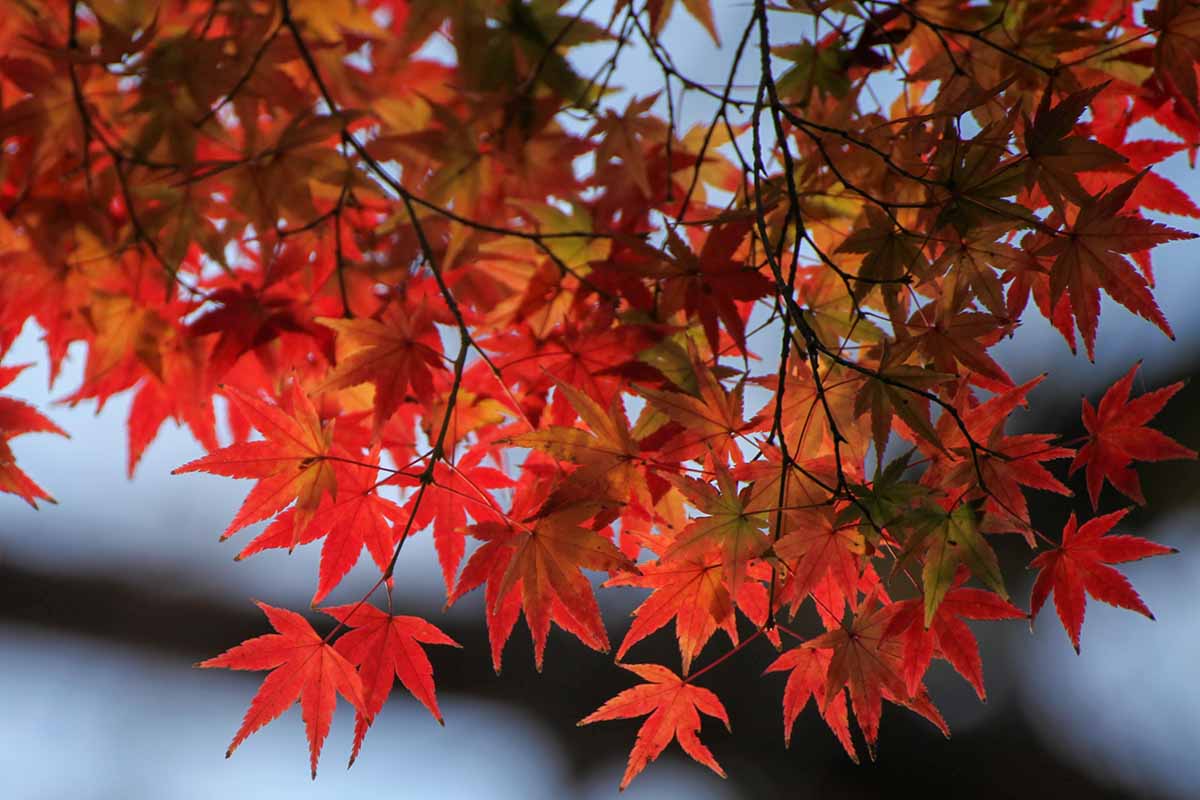
We link to vendors to help you find relevant products. If you buy from one of our links, we may earn a commission.
Armed with the knowledge of what to look for, you can save your Japanese maples, or even keep them from contracting a disease in the first place.
That’s why we’ve whipped up this guide on the most common illnesses of A. palmatum. How to identify them, how to manage them, how to prevent them… it’s all covered here.
Here’s the list of diseases:
9 Common Japanese Maple Diseases
If you’re in need of a refresher about how to grow Japanese maples, be sure to check out our guide.
1. Anthracnose
Fun fact about the word “anthracnose”: it’s a catch-all term for a group of related fungal diseases that usually cause darkened foliar lesions.
And anthracnose can infect many plants, including Acer species such as Japanese maples.
Several fungal pathogens can cause anthracnose in Japanese maples – Aureobasidium apocryptum, Discula campestris, and Colletotrichum gleosporoides are a few significant ones.
Overwintering in dead leaves, twigs, and buds, the pathogens produce fruiting bodies in spring, which release spores that spread via wind and rainwater to uninfected structures.
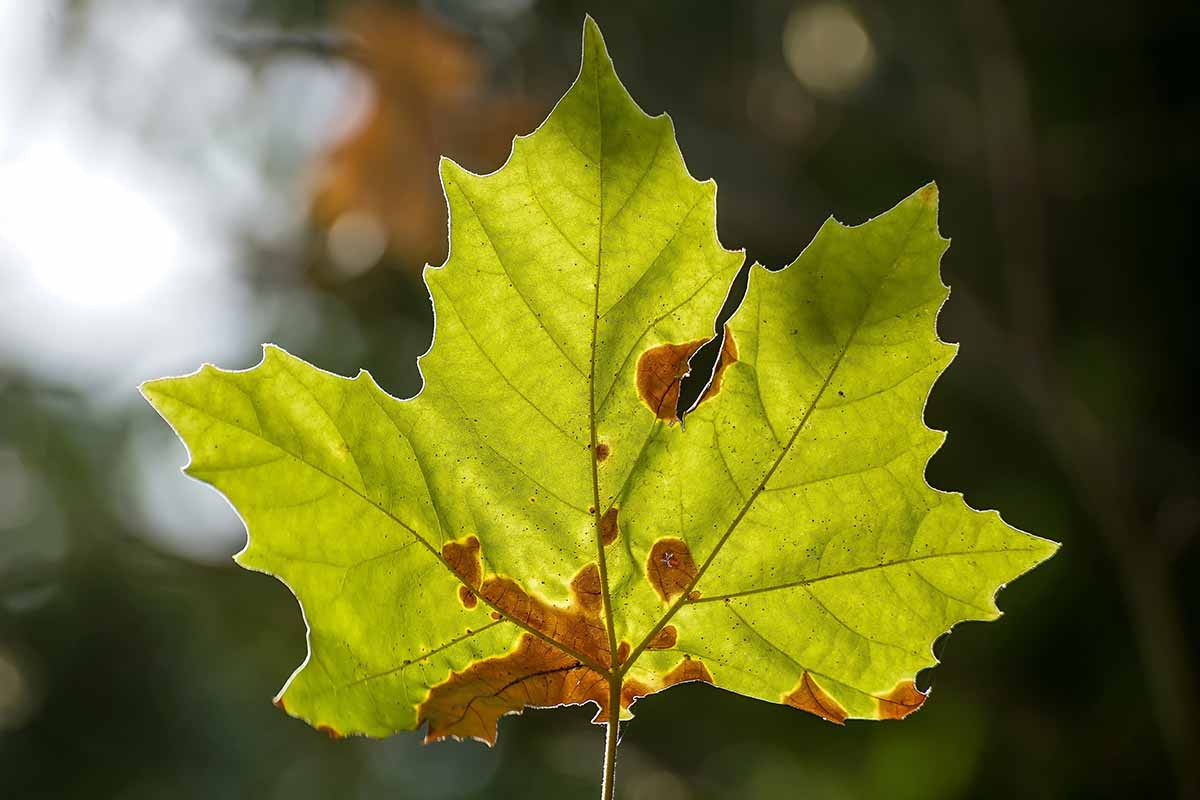
Once infected, Japanese maple foliage exhibits tan or black blotches along leaf margins and primary veins. Infected foliage will then turn necrotic, curl, and drop.
In time, this can defoliate trees prematurely, as well as lead to the decline of stressed, weak, young, and/or recently transplanted Japanese maples.
Since spores spread via splashing water and wind, avoid overhead irrigation and sufficiently space trees when you plant.
Infected leaves and branches should be promptly pruned and destroyed, while dropped leaves, branches, and other bits of detritus should be removed to prevent pathogen overwintering and further spread.
For at-risk Japanese maple trees, preventative fungicide sprays in early spring can help. Start at bud break, and repeat twice at two-week intervals. Be sure to follow the label’s instructions!
2. Canker
If you’re a bit squeamish, feel free to skip this one.
Cankers result from open wounds becoming infected by fungal or bacterial pathogens. Capable of appearing on any part of a Japanese maple tree’s bark, cankers tend to be brown to reddish, sunken, and irregularly-shaped.
They also ooze moist sap, as well as stink something awful.
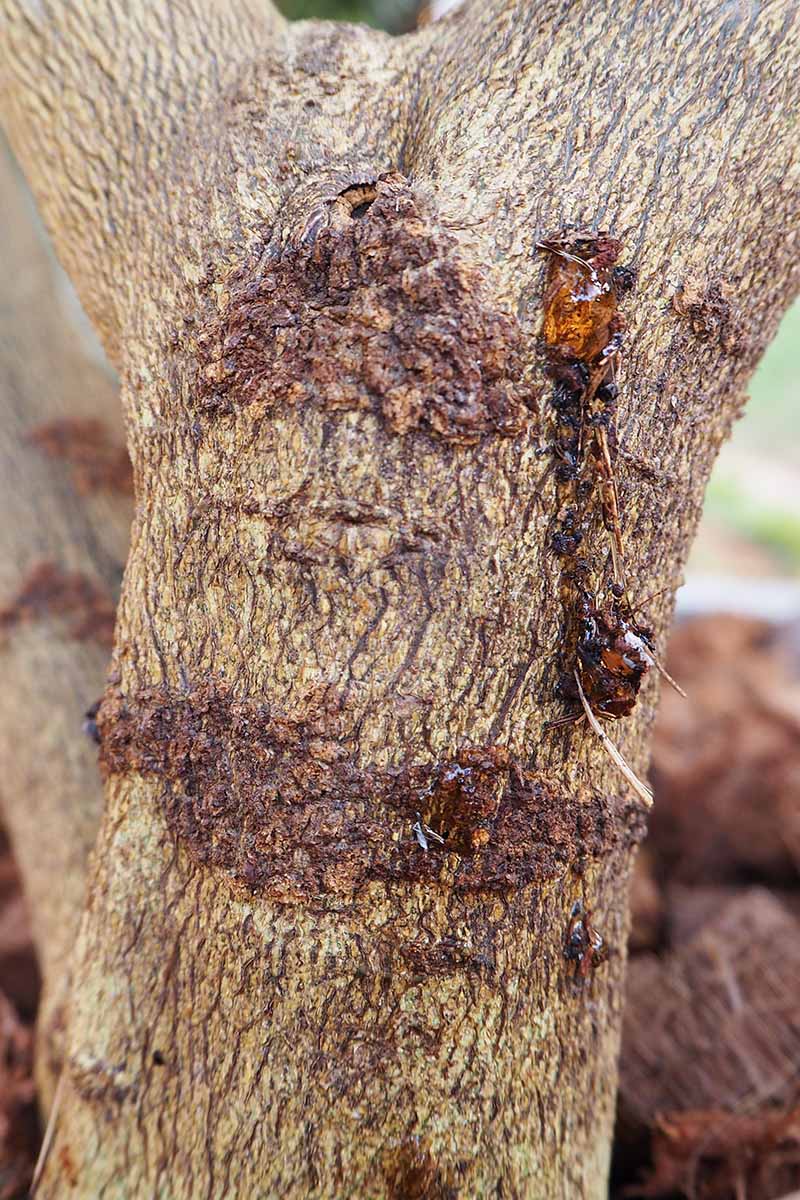
The foliage beyond a canker can become stunted, chlorotic, browned, and curled.
In time, the pathogen can spread into a tree’s vascular system, which can cause further wilt and branch dieback.
Plus, a canker can produce its own spores, which spread in wet and windy conditions to form more cankers elsewhere.
Canker prevention is simple: avoid unnecessarily wounding your Japanese maple and keep it healthy. Also, be sure to regularly sterilize your gardening tools rubbing alcohol.
For a Japanese maple currently carrying cankers, prune away infected branches several inches behind the symptomatic tissue.
Be sure to dispose of them promptly, and only make your cuts in dry weather with sharp, sterile blades. To address cankers on the trunk, you should consult an arborist or plant pathologist.
3. Leaf Scorch
Leaf scorch is technically an abiotic condition, meaning it’s a physiological condition caused by the environment, rather than a biological pathogen.
Caused by high temperatures, dry winds, low soil moisture, or some combination of these, leaf scorch manifests in brown or gray foliar margins, as well as chlorotic or darkened areas between leaf veins. In time, scorched foliage can turn brown, dry, and brittle.
In mild cases, the foliage can survive with only a bit of disfigurement. More severe cases will cause premature defoliation, as well as twig drop.
Either way, symptoms tend to be stronger on the side of the Japanese maple tree that’s most exposed to wind and sunlight.
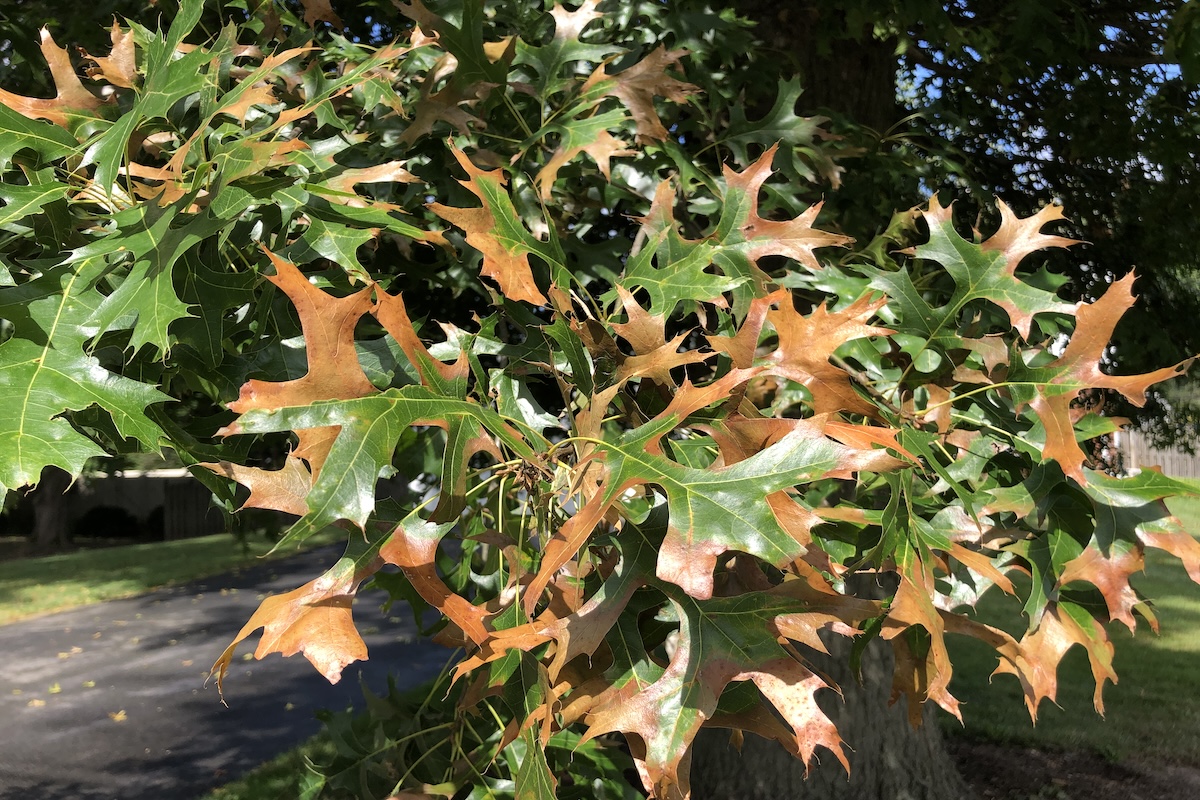
Thankfully, leaf scorch is usually a temporary condition caused by a hot, dry summer. But if leaf scorch happens year after year, then your tree may lose vigor and become a bit stunted.
Preventing and halting leaf scorch are both pretty simple: provide proper irrigation and moisture-retaining mulch.
As long as you work to counteract the moisture loss with enough water, the leaf-scorched Japanese maple should produce beautiful leaves next spring like nothing even happened.
4. Phyllosticta Leaf Spot
Phyllosticta leaf spot is pretty easy to notice. Or “spot,” if you’ll pardon the pun.
It’s caused by the fungus Phyllosticta minima, which overwinters in fallen foliar detritus. In spring, it produces spores that spread via wind and splashing water to the budding foliage of nearby A. palmatum specimens.
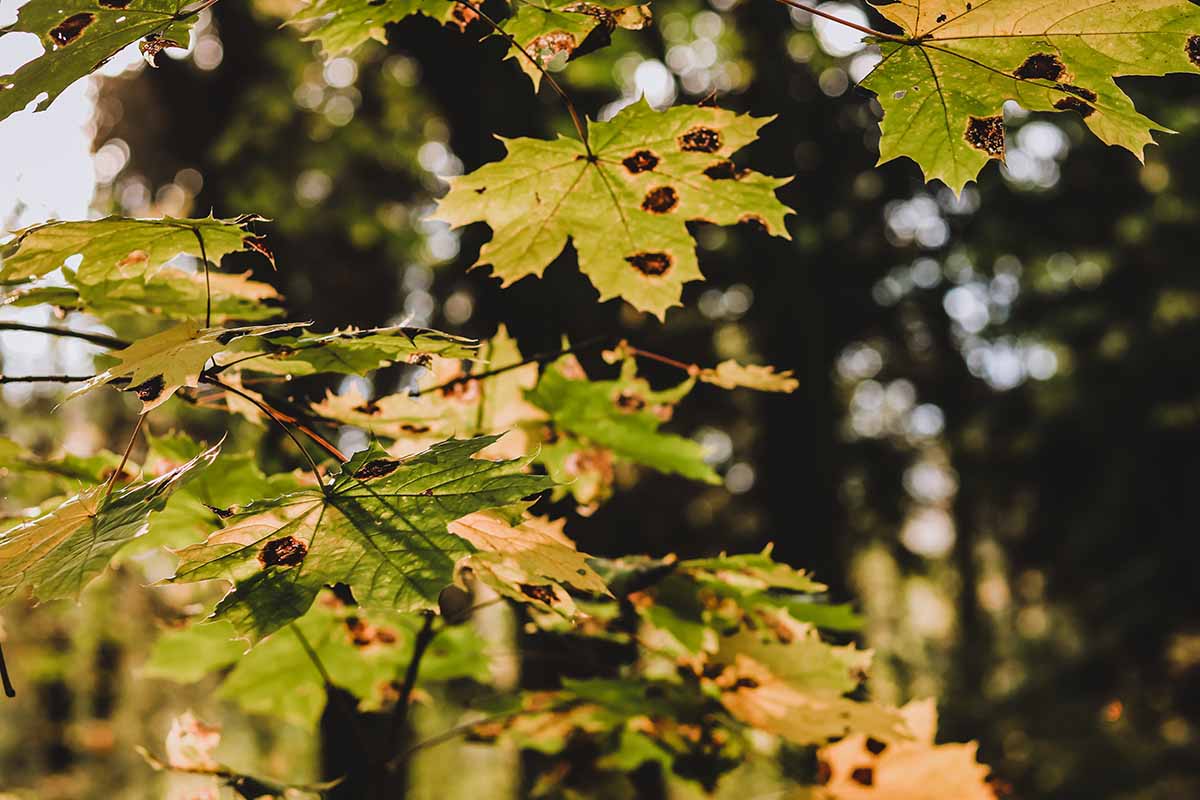
New spores produced on infected foliage can then spread throughout the canopy, or even move to nearby trees. In serious cases, the Japanese maple can be defoliated for a time, but the leaves will typically grow back.
Infected leaves exhibit yellowish to tan spots, with dark reddish to purplish borders.
The centers can sometimes be transparent or even drop out, leaving infected foliage with more shot holes than a John Wick background actor.
Take a closer look at the leaves and you’ll notice black fruiting bodies in the dead sections.
It’s important to rake up nearby foliar detritus in fall to remove sites for overwintering pathogens.
Overhead irrigation should be avoided, along with placing specimens too closely together. If you notice severely infected leaves, pruning them can help limit spread.
Preventative applications of fungicides can be helpful for young, previously diseased, or otherwise at-risk Japanese maples.
Three applications should suffice: one at bud break, one about 10 days later, and one when the foliage is fully formed.
5. Phytophthora Root Rot
Some truly horrible things start with “ph,” such as phonies, phishing, and phlegm. Phytophthora root rot, caused by water molds in the Phytophthora genus, is another.
As with most root rots, Phytophthora begins with too much moisture, whether your Japanese maple receives too much water, the soil it’s sitting in doesn’t drain well, or both.
When the soil is excessively soggy, it serves as the perfect environment for the soil-borne resting spores of Phytophthora species to germinate and produce motile spores.
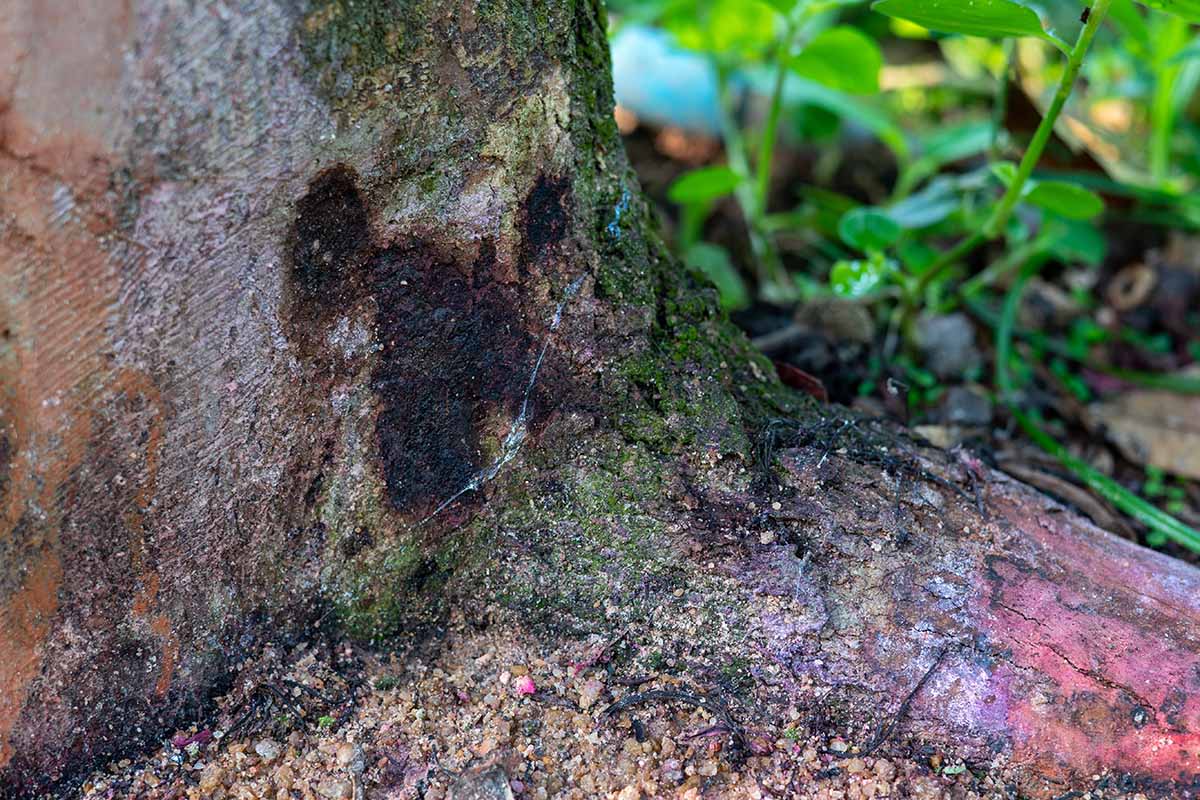
These motile spores spread via free water to penetrate roots, trunks, and branches of nearby plants.
Once infected, a Japanese maple will start to look drought-stressed, ironically enough. Leaves turn discolored, bark darkens, roots turn necrotic, and the plant as a whole will decline and eventually die.
Prevention is as simple as not overwatering, providing well-draining soil, and avoiding planting in contaminated soils.
Be sure to select plants that you know are disease-free, and feel free to use foliar sprays of fungicides, which’ll be absorbed and travel down into the roots.
For a specimen that’s already infected, cease supplemental irrigation immediately. If the plant can’t recover on its own, then you’ll have to remove and destroy it.
6. Powdery Mildew
Caused by several genera of closely related fungi, powdery mildew isn’t the grossest of conditions on this list.
If anything, it shows up on leaves looking like a gentle coating of old baby powder, a fine application of moldy parmesan cheese, or perhaps a severe case of dandruff.
Okay, I guess that’s actually pretty nasty.
Whatever you think the grayish-white powder looks like, it spots and coats foliage, leaving it with abnormal growth, distortion, and discoloration. As it progresses, foliar chlorosis, browning, desiccation, and even premature drop can occur, as well as a decline in overall plant health.
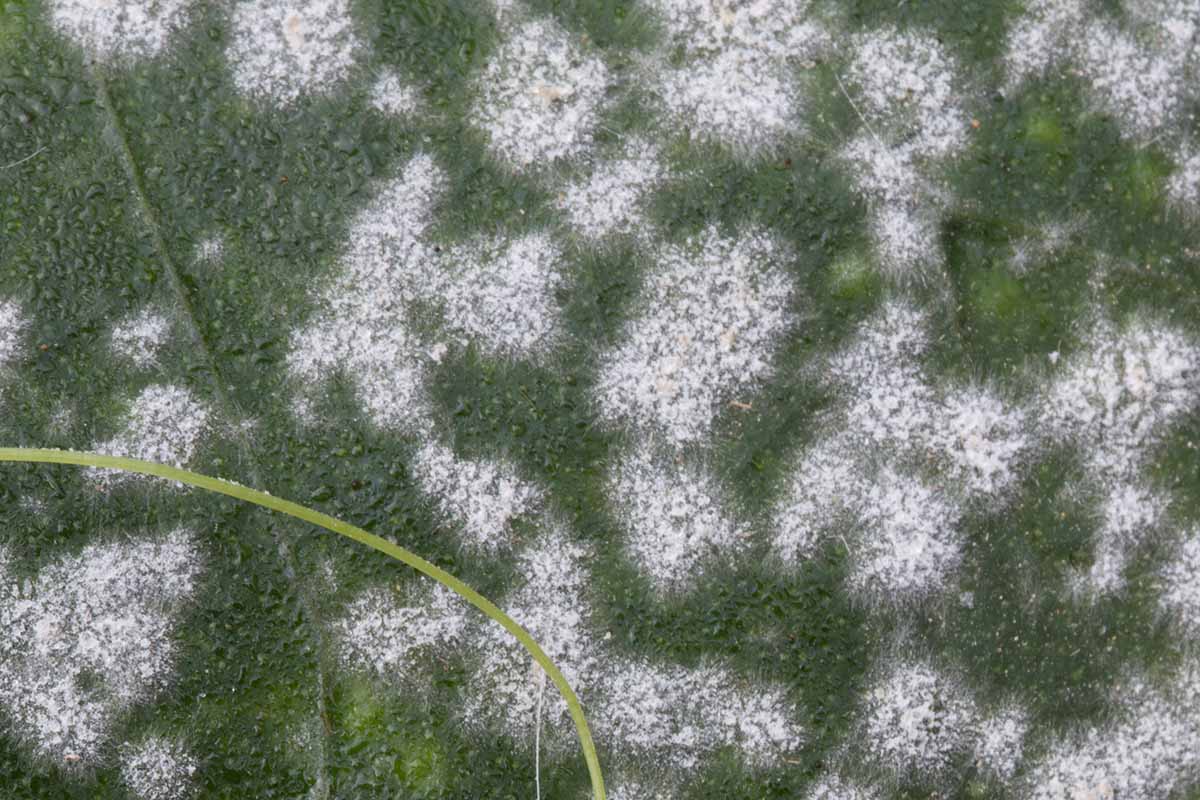
Since the fungi survive the winter by living in fallen plant debris before producing spores in spring, it helps to rake up nearby leaves and twig detritus in fall.
And since the spores need cool and humid conditions to spread, avoid overhead irrigation and crowding plants together.
Remove infected foliage and stems as you notice them. You’ll also want to remove any suckers that pop up near the base of the Japanese maple tree – those are especially vulnerable to infection.
Promptly applying fungicides once symptoms are noted can also help to prevent further spread.
You can learn more about powdery mildew in our guide.
7. Pseudomonas Tip Blight
A disease of many ornamental plants, Pseudomonas tip blight can be bad news for a Japanese maple.
This condition is caused by the bacterium Pseudomonas syringae, which overwinters in fallen plant detritus or in the healthy tissue of the plant itself.
In cool and wet spring weather, it spreads via wind, splashed rain, insects, and/or pruning tools to enter plant tissue through wounds or natural openings.
Once inside, the bacteria produces toxins that move through the xylem to cause problems.
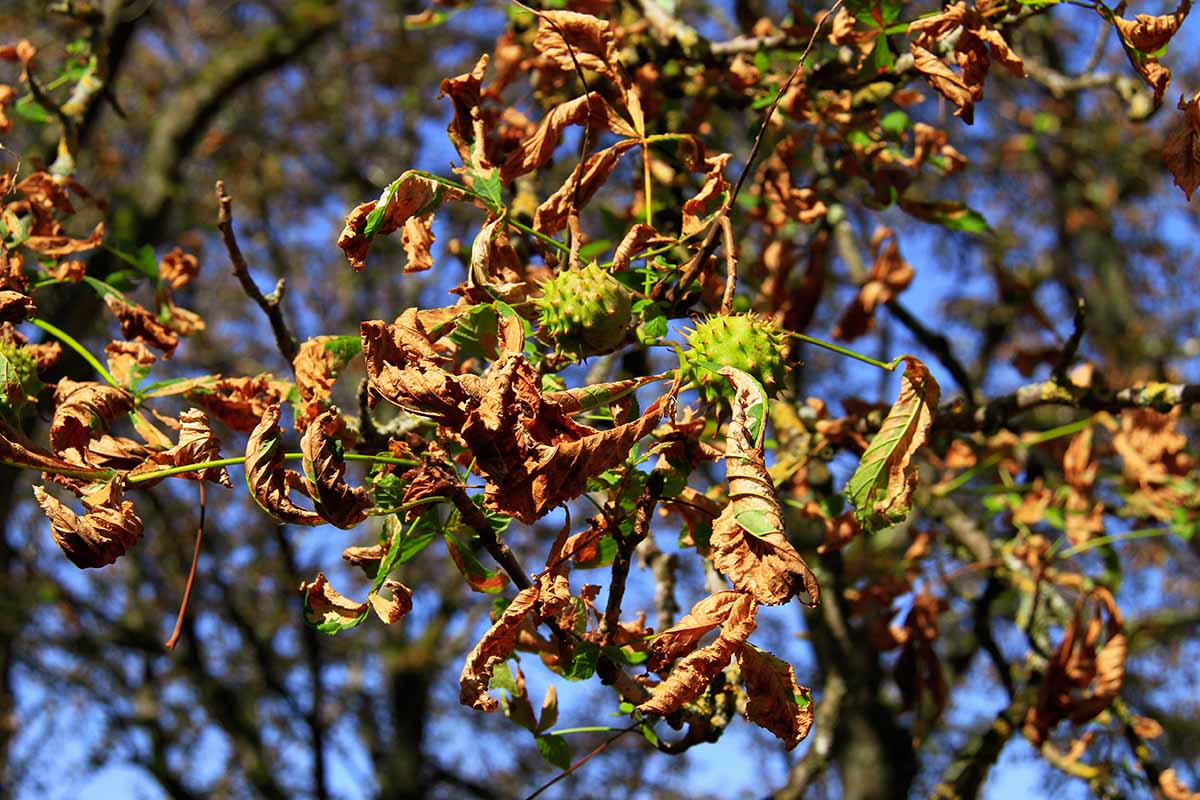
Said problems include shoot discoloration, shriveling, and death.
Think of a gangrenous limb in need of amputation, and that’s what infected branches and foliage are like, for the most part. And if enough branches fall victim, then the entire Japanese maple tree can perish.
Be sure to prune away any infected tissues with sterile tools when you notice them, but only during dry weather – the pathogen could spread in moist conditions.
If any infected leaves and twigs drop, rake those up as well. And be sure to avoid high-nitrogen fertilization, which can lead to vulnerable late-season growth.
If the tree is severely infected – i.e. more than half of the crown is symptomatic – then removing and destroying the specimen may be your best bet.
8. Tar Spot
Just by the name, you can probably imagine how gnarly tar spot looks.
In maples, tar spot is caused by various fungal species from the Rhytisma genus, which overwinter in fallen foliage.
Come spring, the spots split, releasing spores that hitch a ride on wind to nearby foliage. If a leaf becomes infected, tar spots form and the cycle continues.
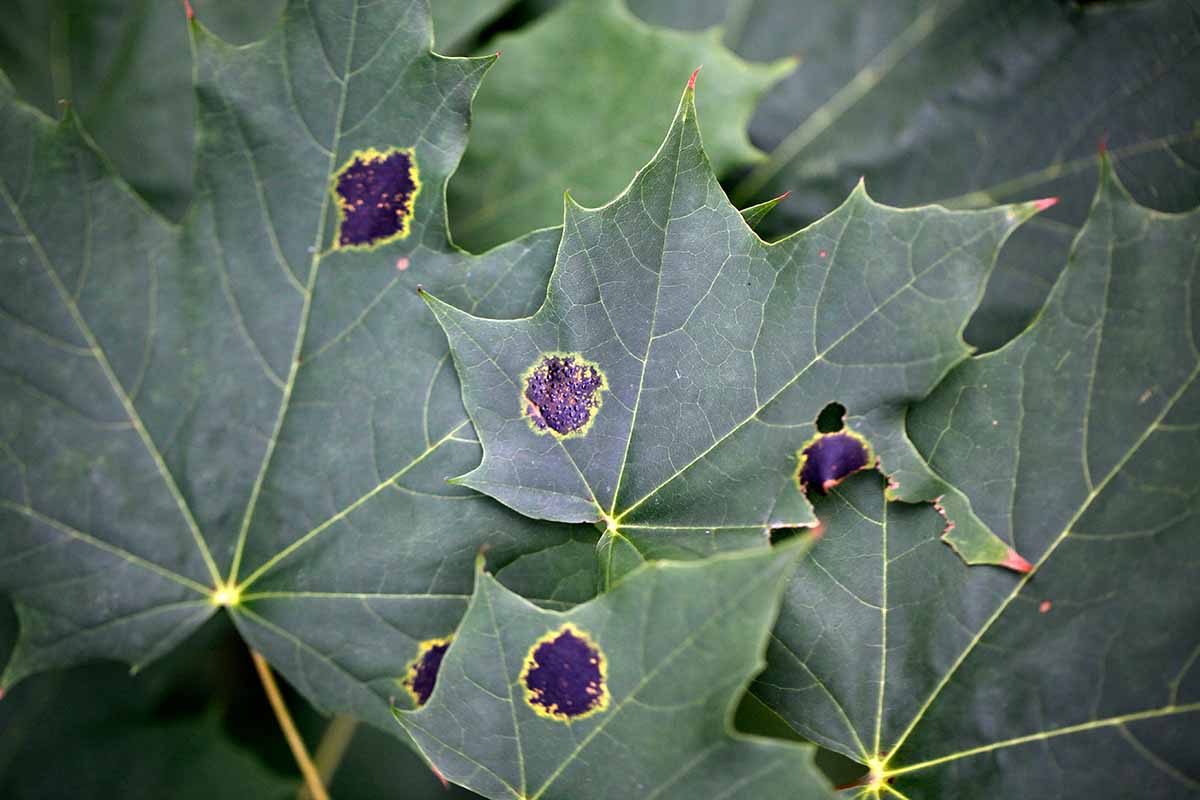
Said spots tend to show up in late spring to early summer as small, pale yellow areas less than an eighth of an inch in diameter.
Over time, the spots grow and become dark brown or black, with yellow borders. This spotting interferes with photosynthesis, slightly impeding the tree’s growth and development.
Thankfully, tar spot doesn’t really damage the host over the long term, since new leaves will form every year.
Besides raking up and destroying fallen leaves, as well as pruning infected ones as you notice them, you could try using foliar fungicides, aiming for as much coverage as possible.
Learn more about tar spot and other Japanese maple leaf spots in our guide.
9. Verticillium Wilt
A disease of many different trees and shrubs, verticillium wilt afflicts Acer species with a particular ease and severity, to the point that it’s often nicknamed “maple wilt” among arborists.
Verticillium wilt is caused by two fungal species of Verticillium: V. albo-atrum and V. dahliae.
Lying dormant in soil and plant roots, these pathogens move to wounds or natural openings in roots and branches, traveling via flowing water, infested soil, wind, or contaminated pruning tools.
Once inside the plant’s vascular system, the pathogen halts the flow of water and nutrients, leading to foliar wilt, browning, and premature drop.
These symptoms are often limited to specific sections of the tree at first, before spreading throughout the crown.
Infected branch bark exhibits discolored streaks, and the entire Japanese maple can gradually decline before perishing.
It’s important to prune away infected branches ASAP, as far back as the discolored bark tissue goes. Use sterilized pruning tools, and make sure to destroy any pruned material.
If the disease outpaces your pruning efforts and/or afflicts the majority of the tree, you may have to remove and destroy the entire plant.
In Sickness and in Health
Cultivating a tree like the Japanese maple can be a lifelong commitment. So it helps to know how to protect it from disease, as well as how to nurture it back to full health.
And now that you know how to keep an A. palmatum healthy, you’re free to focus on other parts of your garden. That’s gardening for ya… there’s always a plant or task demanding your attention. And we wouldn’t want it any other way!
Still have questions? Any diseases or healthcare tips I failed to mention? Share it all in the comments section below.
And for more information about Japanese maples and how to grow them, check out these guides next:
